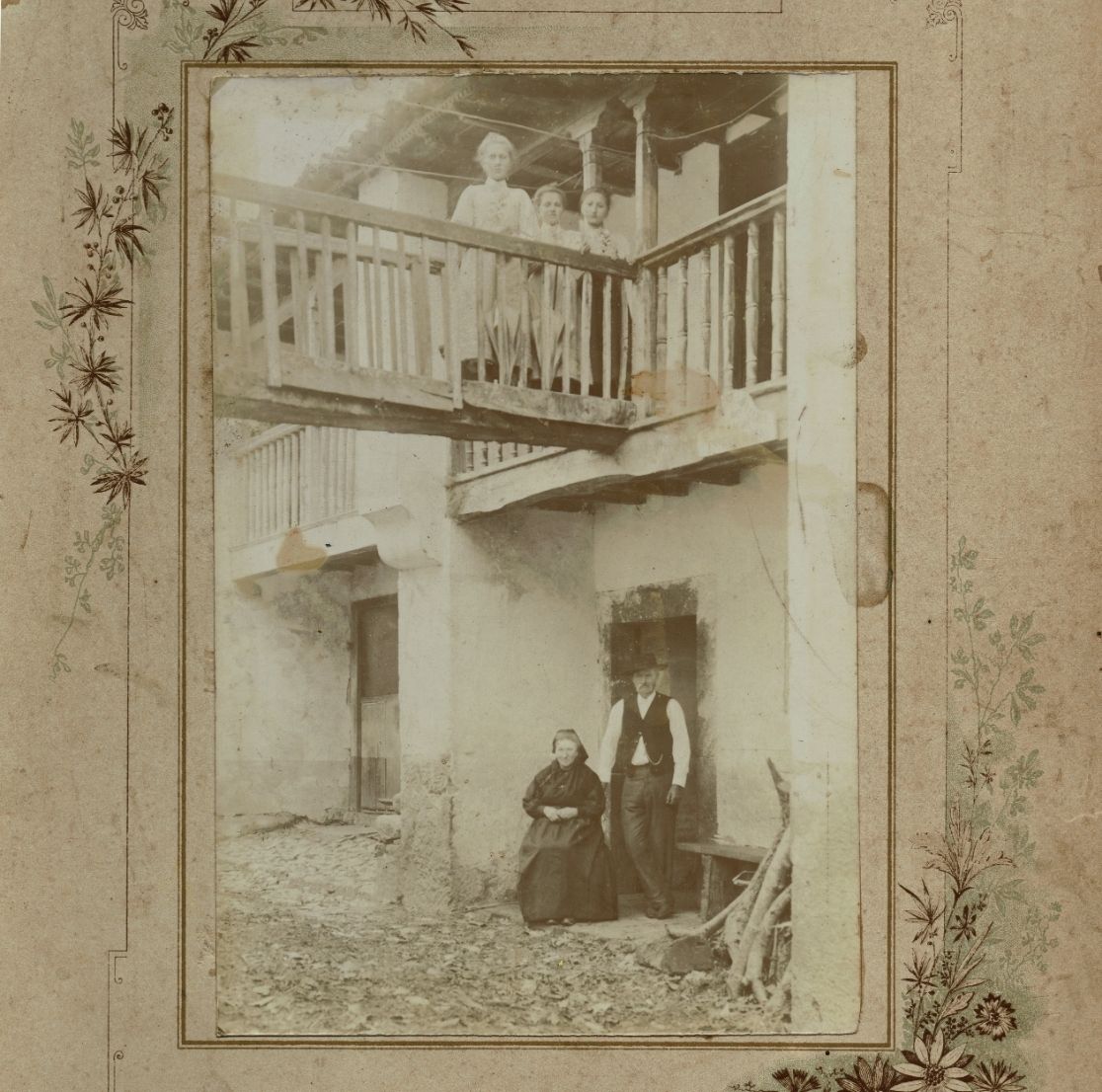
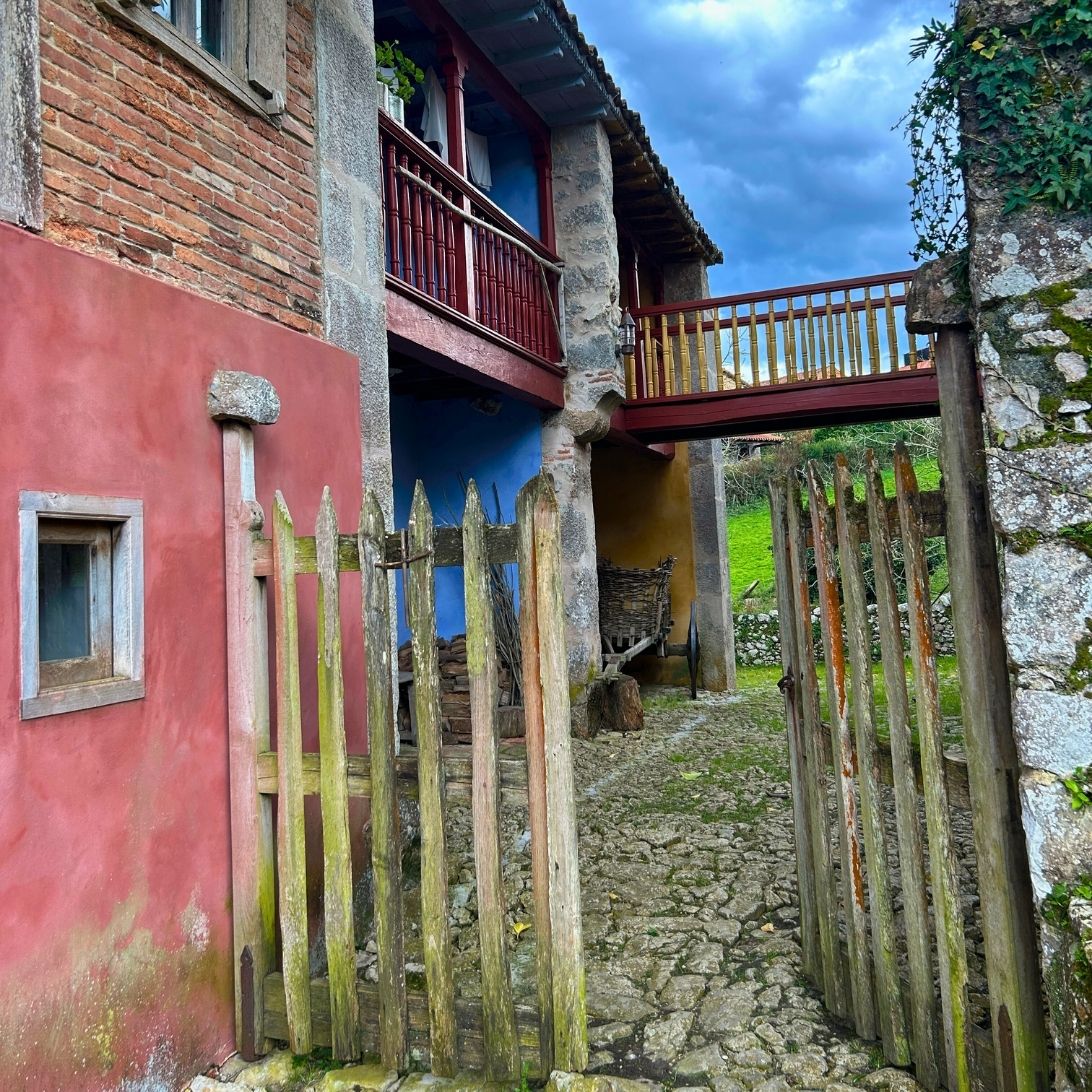
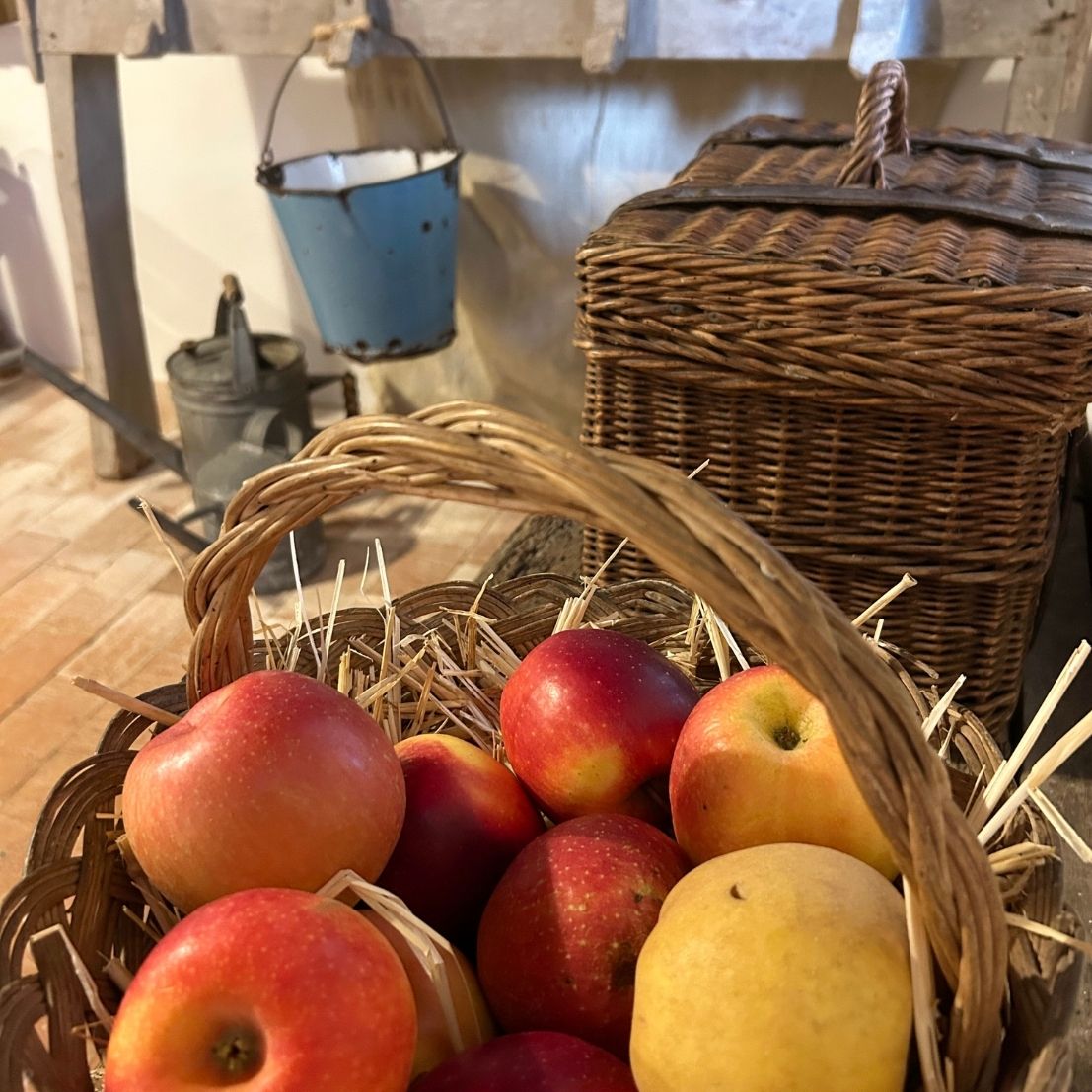
These buildings were the home of the married couple Manuel Sordo Haces (1841-1919) and Vicenta Pandal Sordo (1848-1928), and of their six children: Salvadora, Remigio, Ángel, Enriqueta, Eustaquia and Remigia*.
This family, like many in Eastern Asturias, practised pendular migration to America. Manuel travelled to Cuba at least in 1862, 1876 and 1878. There he worked in commerce and collected enough money to return as a .
Later, his sons and daughters also crossed the Atlantic to Mexico.
The southern row of buildings and the unique cantilevered passageway are the result of this Indian capital. There are also other reforms that replicated many American advances in hygiene and domestic comfort.
This architectural ensemble shows the effervescence of an era where tradition, Indian modernity and entrepreneurial spirit contributed to create the East of Asturias that we know today.
* Mother of the donor who made our museum possible.

The blue house recreates the residence of the Sordo Pandal family around 1900, the time when the only photographs we have of them posing next to their house were taken.
Inside, we can discover innovations brought from America in coexistence with elements from a past that was amid transformation.
Outside, two flowerbeds show the plants and flowers that we have documented in the houses of Eastern Asturias at that time: geraniums, agapanthus, everlasting flowers, garden balsam, rosemary or lemon verbena, among many others.
The blue house offers a veristic, sensorial and immersive museography that evokes the experience of a journey through time with a wealth of details: food, household items, aromas and sounds.
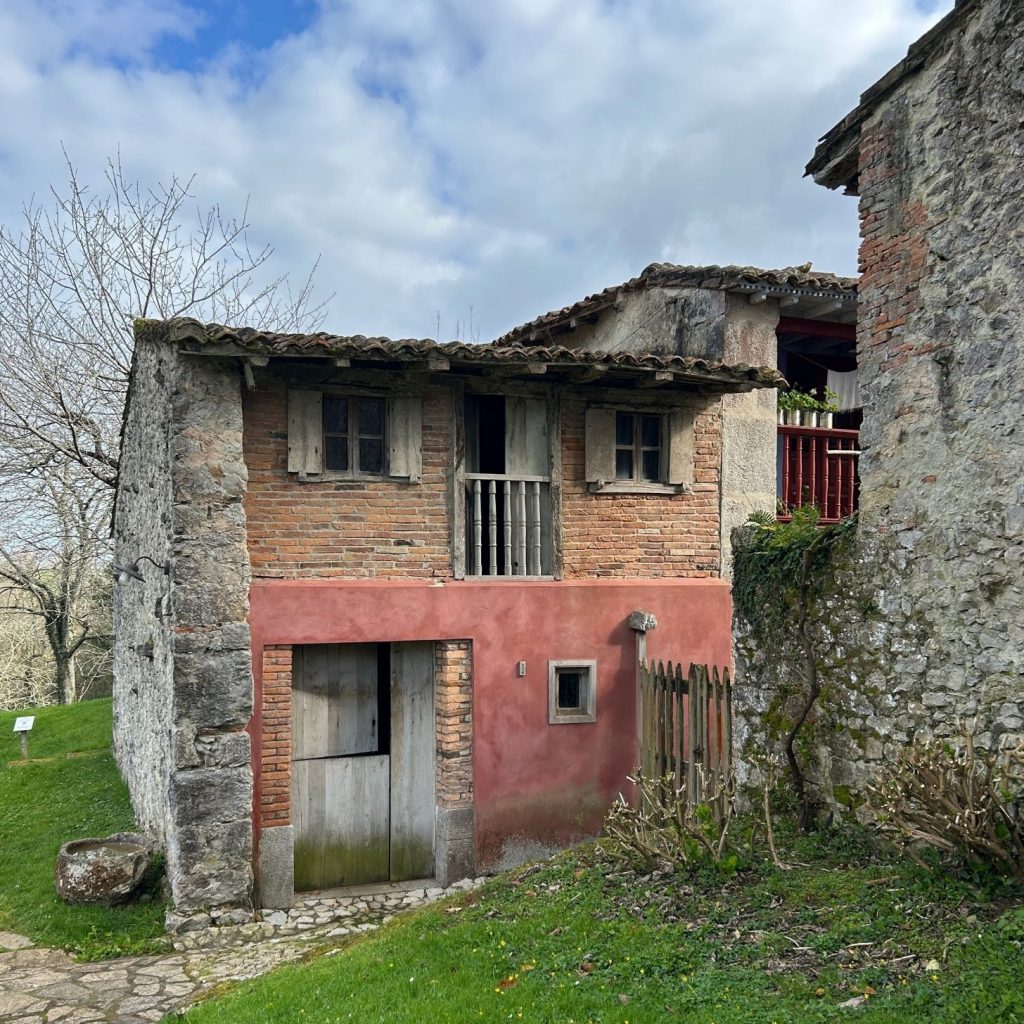
he Little red house will soon house the collection of weavings, ceramics, pottery, earthenware and glass from our museum collection.
We would like to integrate it into the visiting tour and show how we work to conserve and document the cultural legacy of the East of Asturias.

The yellow house and other museum rooms host thematic exhibitions on some of the most representative features of Eastern Asturias.
They show peasant work such as cheese and textile production. Also traditional trades such as carpentry, woodcutting and the making of madreñas (wooden clog).
We have a room dedicated to the trade of tile makers. From May to October, these craftsmen travelled around various provinces of Spain making tiles and bricks, while the women were left in charge of the farmhouse.
There are also other collections on display that express the changes that the industrial revolution produced in traditional society.
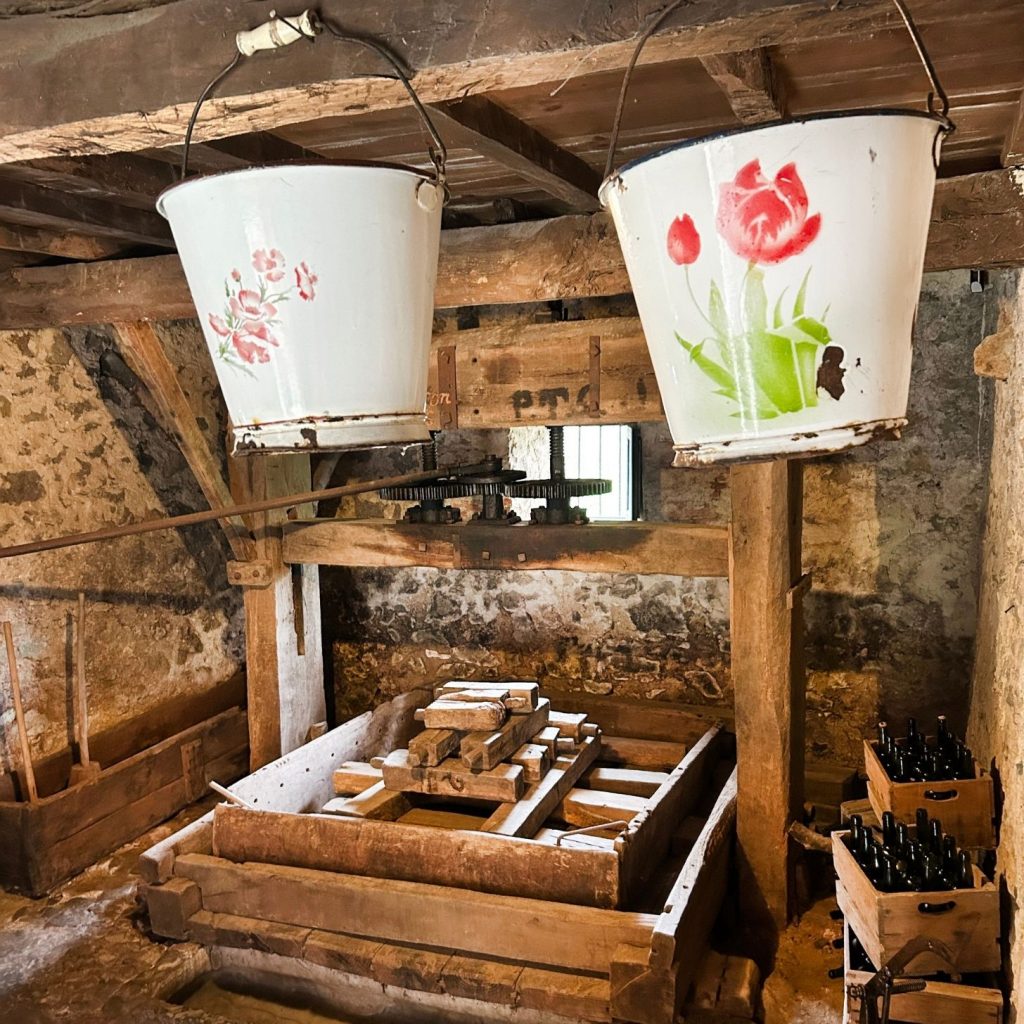
In this space, the Sordo Pandal family made cider for commercial purposes. Afterwards, they let people of Porrúa take turns to make their own.
This cider press belongs to the «squeeze » type. It can hold one tonne of apples and can produce almost seven hundred litres of cider.
A unique inscription on the top beam reminds us how to behave: «Warning/ be / careful/ with/ the cauldrons». And a wooden ladder reveals unexpected secrets.

Our hórreo* shows the diversity of social uses it could have had around 1900: granary, pantry, bedroom, storeroom…
Its interior holds foodstuffs that we change according to the rhythm of the seasons and the work in the fields. Thus, we show the basis of the gastronomic tradition of Eastern Asturias and its connection with the natural cycles.
The aroma of cheeses, cold meat, apples, potatoes or onions make the visit to the Hórreo a sensory experience and faithful to history.
* In 1999 it was moved from Santianes de Ola (Cangas de Onís) to complete the museum’s collection.
At the museum’s entrance is our spectacular avocado tree, which can be considered the largest and oldest one in Europe.
Its total height is 20.77 metres; its trunk is 8.30 metres in diameter and its crown has a circumference of 68.64 metres*.
It was planted in 1906 by Ángel Sordo Pandal from shoots brought from Mexico.
*Measurements of ©Aguacastur.
Barriu Llacín. 33509 Porrúa. Llanes. Asturias
Teléfonos:
+34 985 40 25 47 y
601 55 54 96
Email:
info@museoriente.com